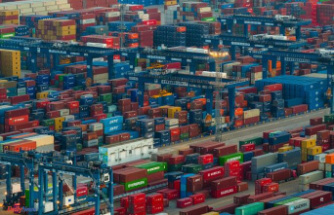The Canton of Graubünden and the Swiss Federal. Research Institute for forest, snow and landscape WSL, a new research center with up to 40 employees and reasons, in Davos. From next year social and economic questions on climate change, extreme events and natural hazards in the Mountain region should be explored.
the new center on Friday in Chur, was Presented. The ETH Zurich is involved with two chairs in it. In the alpine mass movements and Permafrost are investigated, in the second the effects of climate change on mountain regions. Further research topics deal with the early warning, mountain ecology and protection of forest, as well as risk communication.
The base funding for the first twelve years, from 2021 to 2032, is annually around six million Swiss francs. The Canton bears the Grisons two million, the WSL three million and ETH Zurich makes an annual contribution of one Million Swiss francs. With this funding, the reason is secured for operation. Any plans for growth would need to be financed through third-party funds.
The research centre will be established yet this year, formally. It takes on 1. January 2021 operating as part of the WSL in the premises of the SLF in Davos.
For the research of climate change is a fact of how the media orientation on Friday in Chur a number of times it has been made clear. This change and the associated global warming influenced extreme weather events and natural events in the Alpine region is particularly strong.
The result can be Flooding, debris flows, and Landslides, as well as dry periods in the summer. Such events may have demonstrated the social and economic consequences, such as the landslide and debris flows in August 2017 in Bondo GR in the Bergell valley.
climate change will continue to go. Smaller glaciers would be expected to lose up to the year 2100 more than 80 percent of their current ice mass, if the emissions increases continues to be strong. A consequence is that there will be more large stone avalanches, said WSL Director Konrad Steffen on Friday in Chur.
(SDA)
Date Of Update: 12 June 2020, 11:47











